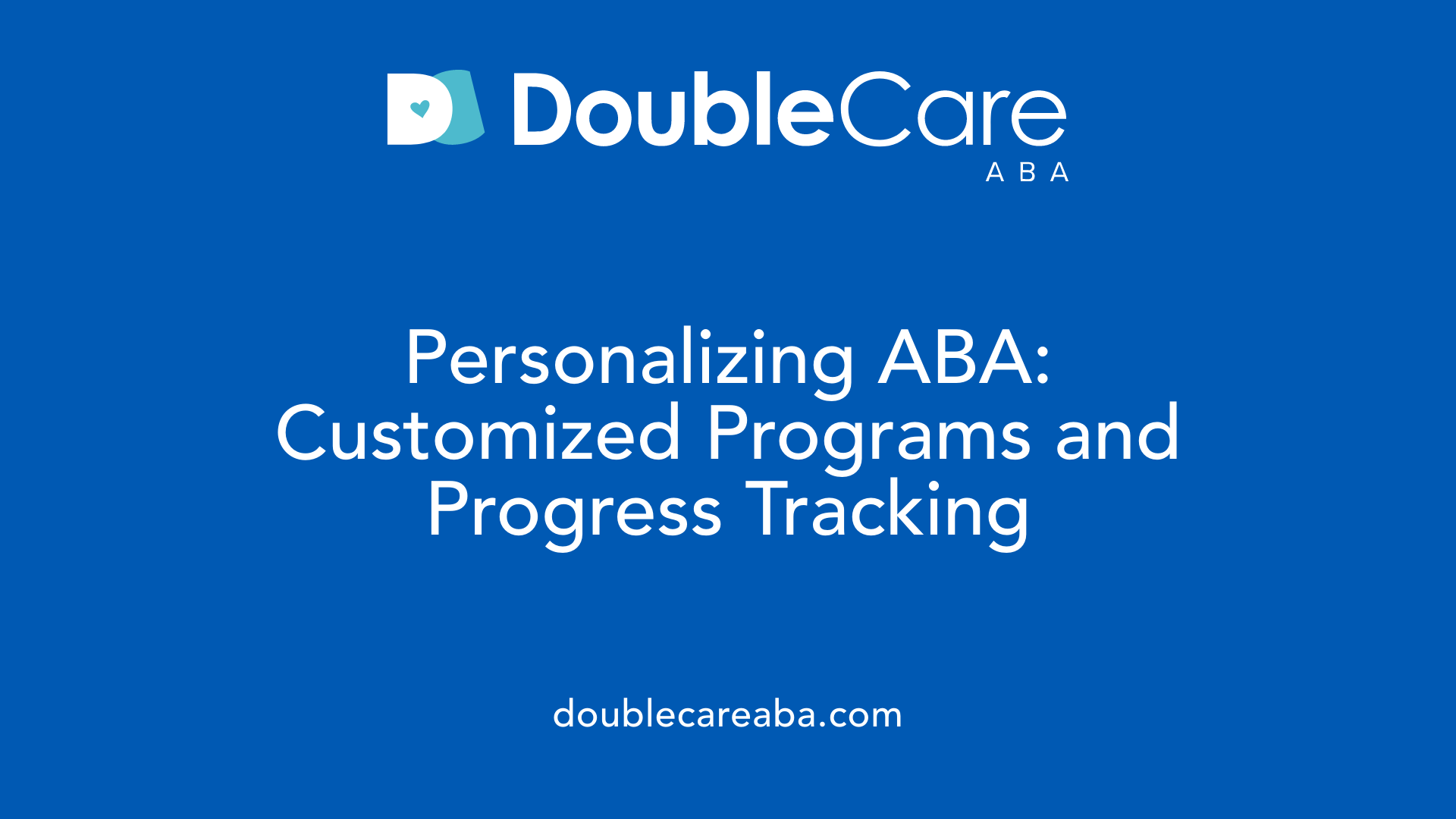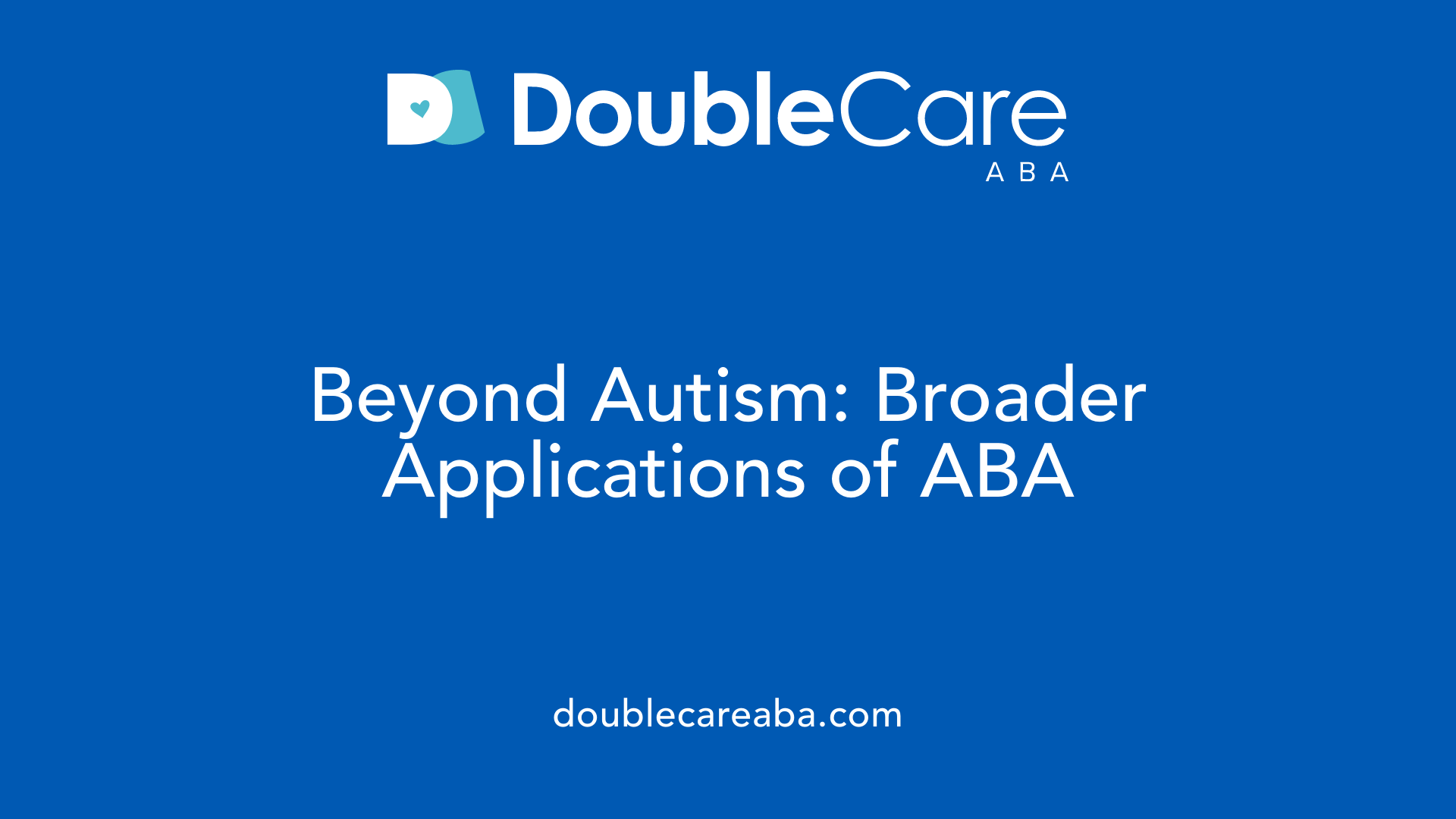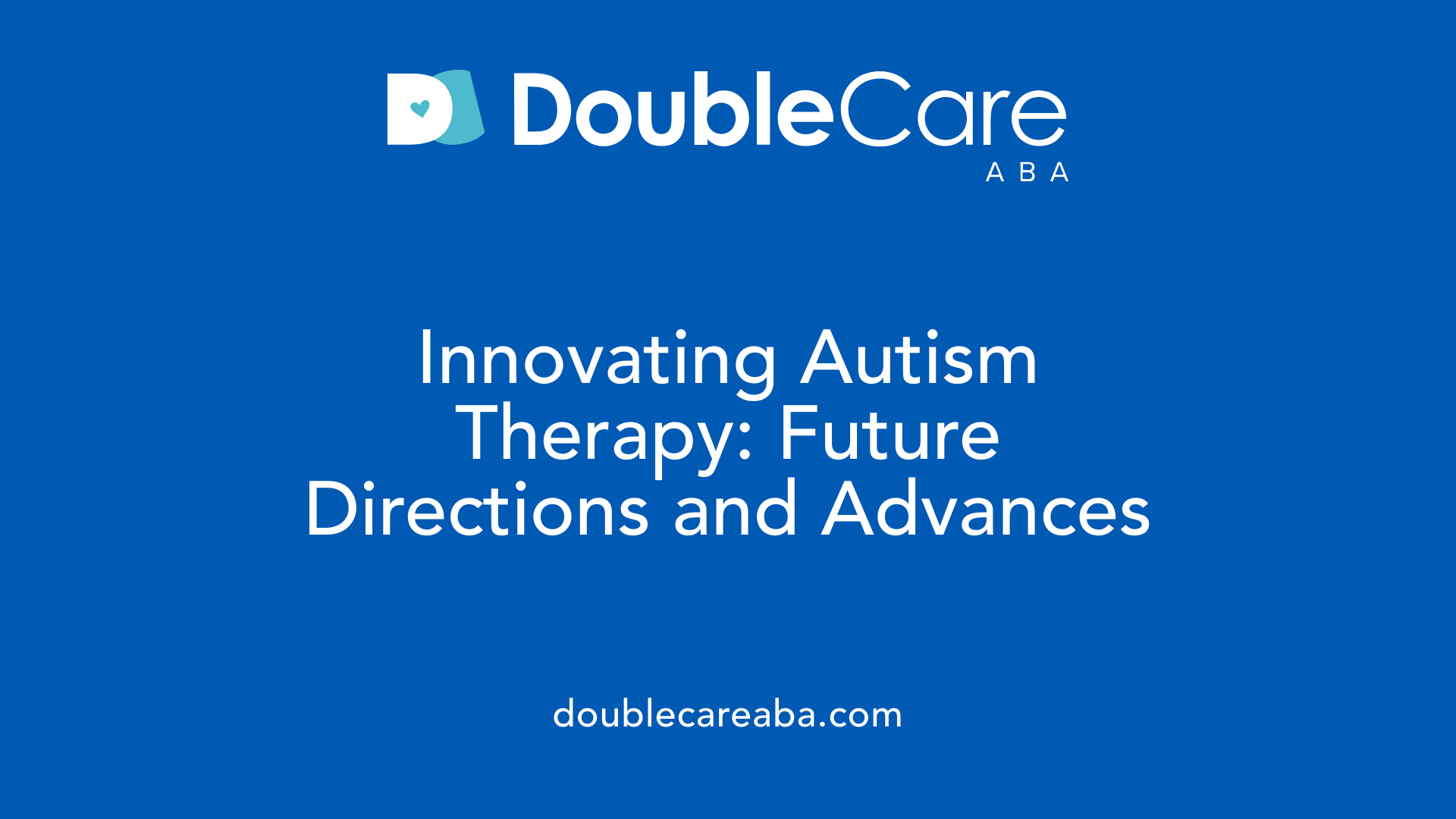What Is Defeat Autism Now?
Unpacking the Science and Practice Behind Defeat Autism Now

Understanding Defeat Autism Now in the Context of Autism Therapy
Defeat Autism Now represents a proactive approach towards autism therapy that heavily incorporates behavioral analysis techniques, particularly those grounded in Applied Behavior Analysis (ABA). This article explores the core principles of ABA, its historical and scientific foundations, various therapeutic methods, ethical considerations, and the practical aspects of accessing therapy to provide a comprehensive picture of this influential intervention strategy.
Foundations of Autism Therapy Centered on Behavioral Analysis

What is autism therapy with a focus on behavioral analysis?
Autism therapy focusing on behavioral analysis primarily refers to Applied Behavior Analysis (ABA). ABA is a scientific discipline that studies how the environment influences behavior and uses that understanding to encourage positive behavioral change. It is research-based and aims to improve socially significant behaviors — especially in individuals with autism spectrum disorder (ASD).
What is the scientific basis of ABA?
ABA is grounded in the science of learning and behavior, originally developed through foundational work published in 1968. It applies the principles of behavior analysis to real-world situations by analyzing the antecedents (what happens before a behavior), behaviors themselves, and consequences (what follows a behavior). Techniques such as positive reinforcement strengthen helpful behaviors, while careful monitoring helps reduce harmful behaviors ethically and effectively.
What are the goals of ABA therapy in autism?
The primary goals of ABA therapy in autism include increasing functional communication, social skills, self-care, play, motor, and academic abilities. ABA programs are highly individualized, developed following detailed assessments of each person's needs and goals. Behavioral skills taught often emphasize foundational competencies like joint attention, which support language and learning development. Trained therapists, under the supervision of Board Certified Behavior Analysts (BCBAs), implement these programs to maximize growth and independence.
ABA therapy has been proven effective, especially when intensive and started early in childhood. It helps children with autism improve essential life skills, reduce problematic behaviors, and enhance overall quality of life.
Historical Roots and Evolution of ABA

Origin and Early Development of ABA
Applied Behavior Analysis (ABA) originated as a scientific discipline in the mid-20th century, aiming to understand how environmental influences shape behavior. The field’s foundational principles were first articulated in a seminal 1968 publication by Baer, Wolf, and Risley, which laid out the core characteristics and applications of ABA in behavior modification. This milestone marked the formal recognition of ABA as a distinct and systematic methodology for studying and influencing behavior.
Key Contributors in ABA History
Among the early pioneers, Dr. O. Ivar Lovaas stands out for his monumental contributions to ABA’s application, particularly in autism treatment. His 1987 study employed the Discrete Trial Training (DTT) approach, an intensive, structured technique that systematically breaks down behavioral tasks into discrete components such as cue, prompt, response, and consequence. Lovaas's work demonstrated significant behavioral improvements in children with Autism Spectrum Disorder (ASD) and brought widespread attention to ABA’s therapeutic potential.
Initial Application to Autism
Although ABA principles were established before Lovaas’s study, the breakthrough in applying ABA specifically to autism spectrum disorders transformed the field. ABA’s focus on environmental factors influencing behaviors and foundational skills—like joint attention critical for language development—provided a new framework for autism intervention. Since then, ABA has expanded beyond autism to address various behavioral challenges, but its roots and early evidence stem from efforts to support children with ASD.
Core Principles and Techniques of ABA in Treating Autism

How Does Behavior Relate to the Environment in ABA?
ABA focuses on the relationship between behavior and the environment. It views behavior as influenced by environmental factors, meaning that skills develop through interaction with surroundings. For children with autism, foundational skills like joint attention emerge through these environmental interactions, serving as building blocks for language and other important abilities.
What Is the Role of Antecedents and Consequences in Behavior Analysis?
In ABA, understanding the triggers (antecedents) and results (consequences) of behaviors is vital. This analysis, often called A-B-Cs, helps therapists identify why behaviors occur and how to modify them effectively by adjusting these environmental components.
How Are Positive Reinforcement Strategies Used?
Positive reinforcement is central to ABA. This technique involves increasing desirable behaviors by providing rewards or encouraging consequences immediately after a behavior occurs. Such reinforcement motivates children to repeat helpful actions while supporting skill development.
What Are the Goal Areas Targeted by ABA Therapy?
ABA programs aim to teach skills across multiple domains, tailoring goals to individual needs. These include communication, social skills, self-care, play, motor abilities, and academic skills. Treatment plans are personalized and regularly monitored by qualified professionals to ensure progress.
Discrete Trial Training: Intensive Structured Teaching within ABA

What is Discrete Trial Training and its Components?
Discrete Trial Training (DTT) is a focused and structured teaching method used within Applied Behavior Analysis (ABA). It breaks down complex skills into small, manageable steps called discrete trials. Each trial consists of four parts: a cue (instruction or question), a prompt (assistance if needed), the child's response, and a consequence (such as reinforcement or feedback). This clear format allows precise teaching and helps measure progress effectively.
What Role Did DTT Play in Early ABA Research?
DTT was central to Dr. O. Ivar Lovaas's landmark 1987 study on autism intervention. In this intensive approach, children with autism were taught through repeated trials aimed at increasing desired behaviors and skills. This pioneering study demonstrated the potential of systematic teaching in improving social and communication skills, laying foundational support for ABA therapies.
How Does DTT Structure Learning Tasks?
Learning through DTT is highly systematic, with each skill broken into distinct steps taught one at a time. Reinforcements immediately follow correct responses, encouraging repetition. This controlled environment helps children focus and reduces distractions. Over time, skills taught in discrete trials can be combined, building toward more complex behaviors.
By offering clear, repeatable teaching steps, DTT remains a vital component in many ABA programs, especially for developing foundational skills in young learners with autism.
Naturalistic Developmental Behavioral Interventions: Child-Centered ABA Approaches

What are Naturalistic Developmental Behavioral Interventions (NDBIs)?
Naturalistic Developmental Behavioral Interventions (NDBIs) are a modern approach within Applied Behavior Analysis (ABA) therapy that blends behavioral principles with developmental science. Unlike more structured ABA methods, NDBIs focus on teaching in natural settings using child-led activities. These interventions emphasize using the child's interests to guide learning opportunities, creating a more engaging and less clinical experience.
How do NDBIs differ from Discrete Trial Training (DTT)?
While Discrete Trial Training (DTT) breaks down skills into highly structured steps with explicit cues and responses, NDBIs take a more fluid and naturalistic approach. For example, NDBIs encourage child-initiated interactions rather than adult-driven sessions. Teaching occurs in real-life environments rather than a clinical setting, and natural reinforcers — like social praise or access to preferred toys — replace contrived rewards used in DTT.
Why do NDBIs emphasize natural environments and child interest?
NDBIs recognize that learning thrives in meaningful contexts. When children learn new skills in their everyday environments, such as at home or playgrounds, they are more likely to apply these abilities spontaneously. By focusing on what motivates each child, such as their favorite activities or objects, NDBIs enhance engagement and encourage skill development that feels relevant and enjoyable.
How do NDBIs promote generalization of skills?
Generalization — the ability to use learned skills across different settings and situations — is a core component of NDBIs. By embedding learning within diverse natural contexts and connecting teaching to the child's ongoing activities, NDBIs help children transfer skills beyond therapy sessions. This approach supports lasting improvements in communication, social interaction, and adaptive behaviors.
Ethical Framework of ABA: Emphasis on Reinforcement Over Punishment

What is punishment in ABA?
In ABA, punishment is defined as any stimulus that decreases the likelihood of a behavior recurring. It aims to reduce unwanted behaviors but must be used cautiously to avoid negative impact.
What ethical guidelines does the BACB provide regarding punishment?
The Behavior Analyst Certification Board (BACB) recommends prioritizing reinforcement over punishment. When punishment is applied, it must be paired with reinforcement strategies that encourage appropriate alternative behaviors.
Why are aversive techniques discouraged?
ABA ethics strongly discourage aversive techniques that cause physical or emotional harm. These harsh methods contradict the field's commitment to humane and effective treatment.
How is reinforcement used to support behavior change?
Positive reinforcement is the cornerstone of ABA therapy. It involves rewarding desired behaviors to increase their frequency, promoting learning and skill development through natural and child-preferred reinforcers.
This ethical framework ensures that behavior interventions respect the dignity and well-being of individuals while effectively supporting positive behavior change.
Role and Training of Professionals in Delivering ABA Therapy

What is the Function of a Board Certified Behavior Analyst (BCBA)?
A Board Certified Behavior Analyst (BCBA) is a highly trained professional who designs, supervises, and oversees ABA therapy programs. They perform detailed assessments to identify individual needs, set measurable goals, and monitor progress over time. The BCBA ensures that therapy is tailored to each person's unique challenges and strengths, maintaining ethical standards and evidence-based practices.
What is the Role of Registered Behavior Technicians (RBTs)?
Registered Behavior Technicians (RBTs) work directly with clients to implement ABA programs developed by the BCBA. Under BCBA supervision, RBTs conduct therapy sessions, apply techniques such as positive reinforcement, and collect data on behaviors and skill development. Their role is essential for consistent, hands-on intervention and supporting the day-to-day learning process.
Why is Individualized Program Design and Oversight Important?
Because each client has distinct needs, an individualized ABA program is crucial for effective outcomes. The BCBA’s expertise enables the adaptation of approaches and goals based on ongoing assessments and data analysis. Continuous oversight ensures that interventions are ethical, effective, and adjusted as the client progresses, ultimately fostering meaningful skill acquisition across communication, social, academic, and daily living domains.
Tailoring ABA Programs to Individual Needs and Monitoring Progress

How Are ABA Programs Individually Tailored?
ABA programs begin with a detailed assessment conducted by a Board Certified Behavior Analyst (BCBA). This evaluation identifies the individual's strengths, needs, and socially significant behaviors to establish personalized, realistic goals. Based on this information, the BCBA creates a tailored treatment plan designed to promote improvements across various skill areas.
What Skills Do ABA Programs Target?
ABA therapy aims to enhance a broad range of skills including communication, social interactions, self-care abilities, play skills, motor development, and academic competencies. By focusing on these domains, the program addresses both core and supportive functions essential for daily living and independence.
How Is Progress Monitored?
Ongoing data collection is fundamental in ABA programs. Therapists continuously record behavior responses and outcomes during teaching sessions. This systematic monitoring allows the BCBA to evaluate effectiveness, make data-driven decisions, and adjust teaching strategies as needed. Progress evaluation ensures the program remains dynamic and responsive to the individual's evolving needs.
Why Is This Individualization Important?
Individualized programming recognizes that each person has unique learning patterns and challenges. Customization increases the relevance and impact of interventions, leading to more meaningful behavior changes and skill acquisition. Continuous progress monitoring further ensures optimal outcomes by adapting to the client's development over time.
ABA’s Evidence Base and Recognition as a Best Practice

What scientific research supports ABA?
Applied Behavior Analysis (ABA) is firmly grounded in scientific research that dates back to the 1960s. Studies have repeatedly demonstrated ABA's effectiveness, particularly for children with autism spectrum disorder (ASD) and related developmental conditions. Research initiated by pioneers like Dr. O. Ivar Lovaas in the 1980s provided some of the first clear data showing that behavioral interventions could significantly improve social, communicative, and cognitive skills.
How is ABA recognized by health authorities?
ABA is widely recognized as an evidence-based practice by major health authorities and organizations. It is considered a gold standard treatment for ASD because of its extensive research support and consistent positive outcomes. Many private insurers cover ABA therapy, reflecting its established medical necessity, and Medicaid programs across many states also provide coverage, ensuring access to children under 21.
Why is early and intensive intervention important in ABA?
Early and intensive ABA interventions significantly improve outcomes. Intensive programs, often involving multiple hours of therapy weekly, have been shown to produce greater gains in communication, social functioning, and adaptive behaviors. The tailored nature of ABA — with continuous assessment and individualized goal setting — ensures therapy targets the unique needs of each child. Starting therapy early harnesses critical developmental windows for skill acquisition, making interventions more effective over time.
Applications of ABA Beyond Autism Therapy

How is ABA used for smoking cessation?
ABA techniques have been effectively applied to help individuals quit smoking by analyzing and modifying the environmental triggers and behaviors associated with tobacco use. Through careful assessment, strategies such as reinforcement for abstinence, teaching replacement behaviors, and systematically reducing smoking cues are implemented to support cessation efforts.
In what ways does ABA improve activity levels?
Applied Behavior Analysis can increase physical activity by identifying the antecedents and consequences influencing a person’s inactivity. By setting clear goals, providing reinforcement for engaging in desired activities, and shaping behaviors gradually, ABA promotes healthier activity patterns. These interventions are customized to individual needs and help sustain motivation over time.
How does ABA enhance workplace behaviors?
ABA principles are also utilized to boost employee performance and customer service behaviors. This involves analyzing workplace routines to pinpoint behaviors needing improvement, then applying strategies like positive reinforcement and feedback to encourage desirable actions. Structured interventions can improve communication, punctuality, and overall job effectiveness, benefiting both employees and employers.
Navigating Access to ABA Therapy Services

How to Consult Healthcare Providers for ABA Therapy
Accessing ABA therapy typically begins with a consultation with a healthcare provider, such as a pediatrician or developmental specialist. These professionals can evaluate the child's developmental needs and provide referrals or prescriptions for ABA services when appropriate. Early intervention often leads to more effective outcomes, so prompt consultation is encouraged.
Understanding Insurance Coverage Considerations
Insurance coverage for ABA services varies, but many private health insurance plans offer coverage, especially when ABA is medically necessary and prescribed by a doctor. Furthermore, Medicaid programs are federally mandated to cover ABA therapy for children under 21 years when prescribed. It’s important to verify specific policy details, including service limits, co-pays, and any prior authorization requirements.
Selecting Appropriate ABA Providers
Choosing the right ABA provider involves reviewing credentials, such as certification by a Board Certified Behavior Analyst (BCBA), and the experience of therapists (Registered Behavior Technicians or RBTs) who implement the therapy. Families should consider asking providers about their treatment approaches, how individualized programs are designed, and how progress is monitored. Evaluating communication style and provider availability can also help ensure a good fit for the child and family.
Effective navigation of these steps empowers families to access quality ABA services tailored to their child’s individual needs.
Integrating ABA Within Daily Life: Generalization and Maintenance of Skills

What strategies promote skill generalization in ABA?
Effective ABA interventions focus on ensuring that learned skills transfer beyond the therapy setting to everyday life situations. Strategies include teaching skills across multiple settings, using various people during instruction, and programming for maintenance sessions that revisit skills over time. Naturalistic approaches encourage embedding learning opportunities throughout the day to enhance generalization.
Why are natural environments important for skill transfer?
Teaching skills in natural environments — places where the child would typically use those abilities — is crucial for meaningful learning. Naturalistic Developmental Behavioral Interventions (NDBIs) capitalize on this by delivering instruction in home, school, or community settings. This encourages use of skills in real-life contexts, supporting more spontaneous and flexible application.
How do child choice and interests enhance learning?
Incorporating a child’s interests and allowing choice boosts motivation and engagement. ABA approaches within NDBIs emphasize child-initiated interactions and tailor activities around what the child enjoys. This personalized learning promotes positive reinforcement naturally, making the acquisition and generalization of skills more effective and enjoyable.
Future Perspectives and Innovations in Autism Therapy Approaches

How Are ABA Methodologies Evolving?
ABA therapy continues to develop by integrating new insights and techniques. Traditional methods like Discrete Trial Training (DTT), which use structured, repetitive trials, are now often complemented by approaches that are more child-centered and naturalistic. This evolution reflects a growing understanding that tailoring therapy to the child’s interests and learning environment can enhance effectiveness and promote skill generalization.
What Is Driving the Integration of Naturalistic and Developmental Strategies?
Naturalistic Developmental Behavioral Interventions (NDBIs) represent a significant innovation in autism therapy by combining ABA’s scientific rigor with developmental and naturalistic teaching methods. Unlike strictly structured ABA sessions, NDBIs emphasize teaching within natural environments, utilizing the child's motivations and promoting social interaction. This approach supports foundational skills such as joint attention and language development, which are critical for long-term communication and social success.
Which Research Directions Show Promise for the Future?
Current and future research aims to optimize intervention strategies by better understanding how behavior develops in natural contexts. Studies emphasize the importance of early social interaction and environmental factors in shaping behavior. Emerging work focuses on refining reinforcement techniques to maximize learning while minimizing reliance on punishment, aligning with ethical guidelines. Long-term, personalized ABA programming, supported by advances in technology and ongoing data analysis, promises more precise and effective therapy tailored to individual developmental profiles.
These innovations underscore a shift from exclusively structured ABA approaches toward flexible, integrative models that accommodate each child's unique needs, strengthening outcomes and quality of life.
Summing Up the Role of Behavioral Analysis in Defeat Autism Now
Defeat Autism Now embraces a commitment to scientific, individualized, and ethical approaches to autism therapy through behavioral analysis, especially utilizing Applied Behavior Analysis. By understanding its roots, principles, and practical applications, families and professionals can better appreciate how evidence-based, tailored interventions can promote meaningful skill development and behavioral improvements. As research and practices continue to evolve, the integration of intensive, naturalistic, and child-centered methods promises even greater support for individuals with autism and their communities.
















